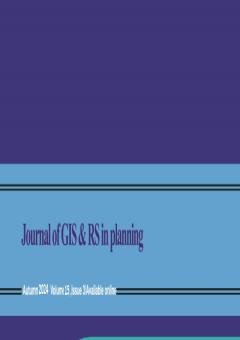The impact of spatial information technology on judicial proceedings in Iran and the United States
Subject Areas :ali nagafi tavanai 1 , reza heydari gilagha 2 , علیرضا میلانی 3 , javad tahmasebi 4
1 -
2 - PhD student at Islamic Azad University, Emirates Branch. Emirates.
3 - استادیار دانشگاه اسلام شهر
4 - Assistant Professor and Faculty Member, Islamic Azad University, North Tehran Branch.
Keywords: Remote sensing, restorative justice, criminal matters, information technology.,
Abstract :
The purpose of the present study was to examine the impact of spatial information technology in judicial proceedings in Iran and the United States based on the reliability of remote sensing data. Issuing wrong decisions is inevitable in all judicial systems in the world. In such circumstances, the mission of criminal justice requires that an efficient mechanism be implemented in order to prevent the rights of the parties to the dispute from being violated. This mechanism in Iranian law is the retrial, and in American law, it is a specialized system for dealing with the claim of innocence of the convicted. The foundations of this mechanism in Iranian criminal law are based on public interest and in accordance with Islamic laws and framework, but in American law it is based on individualism. In both legal systems, there are challenges in this regard; One of the main challenges in the retrial debate is the issuance of erroneous verdicts, which the judge issues based on the documentation. Therefore, this study discusses remote sensing as a tool to help make better decisions in some criminal matters, and it was stated that in many countries around the world that have legal issues and challenges, remote sensing is used as a tool with low error and scientifically supported data. As a result, satellites and other remote sensing technologies are revolutionizing our abilities to look carefully at the most distant parts of the world with a perception beyond our senses and to obtain reliable and inexpensive legal evidence, which in some cases can be the only evidence available. Therefore, the above, along with other reasons, make it timely and necessary to review the use of the aforementioned information as evidence and pay attention to ways to increase its use in legal fields.
23651607/now-google-earth-marijuana-fields (accessed on 22 April 2014).
Leblanc, G.; Kalacska, M.; Soffer, R. Detection of single graves by airborne hyperspectral imaging. Forensic Sci. Int. 2014, 245, 17–23. [Google Scholar] [CrossRef]
Harris, R. Science, policy and evidence in EO. In Evidence from Earth Observation Satellites: Emerging Legal Issues; Purdy, R., Leung, D., Eds.; Martinus Nijhoff Publishers: Leiden, The Netherlands, 2013; Vol. 7, pp. 43–64. [Google Scholar]
Foody, G.M. Status of land cover classification accuracy assessment. Remote Sens. Environ. 2012, 80, 185–201. [Google Scholar] [CrossRef].
Fathi, A. (2015). The Role of Judiciary in Iran: An Analysis of Independence and Accountability. Iranian Journal of Law and Political Science, 3(1), 45-60.
Song, J., Andresen, M. A., Brantingham, P. L., & Spicer, V. (2017). Crime on the edges: Patterns of crime and land use change. Cartography and Geographic Information Science, 44(1), 51–61. https://doi.org/10.1080/15230406.2015.1089188
Foucault, M. Power/knowledge: Selected interviews and other writings, 1972-1977; Random House LLC: New York, NY, USA, 2010; p. 288. [Google Scholar]
Leśniak, A., Polończyk, A., & Waśniowski, P. (2022). Variations in the spatial distribution of crime events in an urban environment during the COVID-19 lockdown. Cartography and Geographic Information Science, 49(2), 171–188. https://doi.org/10.1080/15230406.2021.2013945
He, Q., & Li, J. (2022). The roles of built environment and social disadvantage on the geography of property crime. Cities, 121, 103471. https://doi.org/10.1016/j.cities.2021.103471
Kounadi, O., Ristea, A., Araujo, A., & Leitner, M. (2020). A systematic review on spatial crime forecasting. Crime Science, 9(1), 7. https://doi.org/10.1186/s40163-020-00116-7.
Baker, S., & McLafferty, S. (2005). Geographic Information Systems and Public Health: A New Perspective. Public Health Reports, 120(5), 569-577.
Brantingham, P. J., & Brantingham, P. L. (1981). Environmental Criminology. Sage Publications.
Chainey, S., & Ratcliffe, J. (2005). GIS and Crime Mapping. John Wiley & Sons.
Li, Y., Xie, Y., & Shekhar, S. (2023). Spatial Data Science. In L. Rokach, O. Maimon, & E. Shmueli (Eds.), Machine learning for data science handbook: Data mining and knowledge discovery handbook (pp. 401–422). Springer International Publishing. https://doi.org/10.1007/978-3-031-24628-9_18.
Zare, M. (2016). Judicial Training in Iran: Current Status and Future Directions. Journal of Legal Education, 66(1), 89-104.
Corporate. (2020). The Justice Gap: Measuring the Unmet Civil Legal Needs of Low-Income Americans. LSC Report.
فرجیها، محمد؛ غلاملو، جمشید (1394). ساز و کارهای رسیدگی به ادعای بیگناهی محکومان: مطالعه تطبیقی نظام های حقوقی ایران، آمریکا و انگلستان، فصلنامهی پژوهش حقوق کیفری، ش. 1.
صادقي، حسين، علي درويشي بلوراني و سيد كاظم علوي پناه، سنجش از دور در نظام حقوقي ملي و ايران، سال سوم، 1390 ، شماره 2، ص 51 GIS بين المللي، نشريه سنجش از دور.
امیریان فارسانی، امین. (1402). چالش های جایگزین تعقیب کیفری در ایران و ایالات متحده آمریکا. تمدن حقوقی، 6(14 )، 91-108. SID. .
https://sid.ir/paper/1045989/fa


